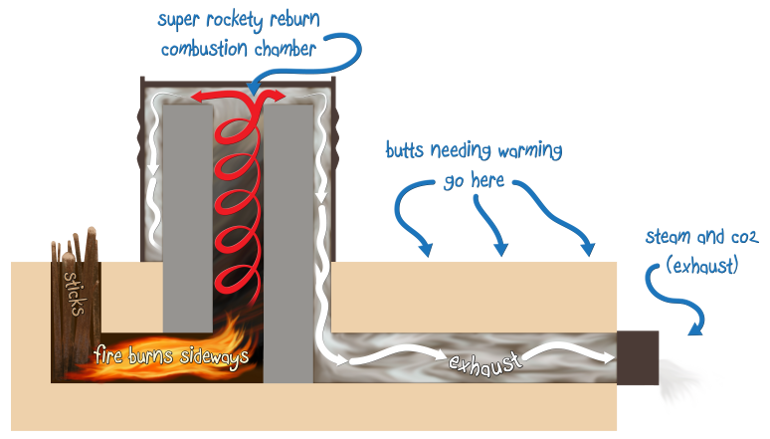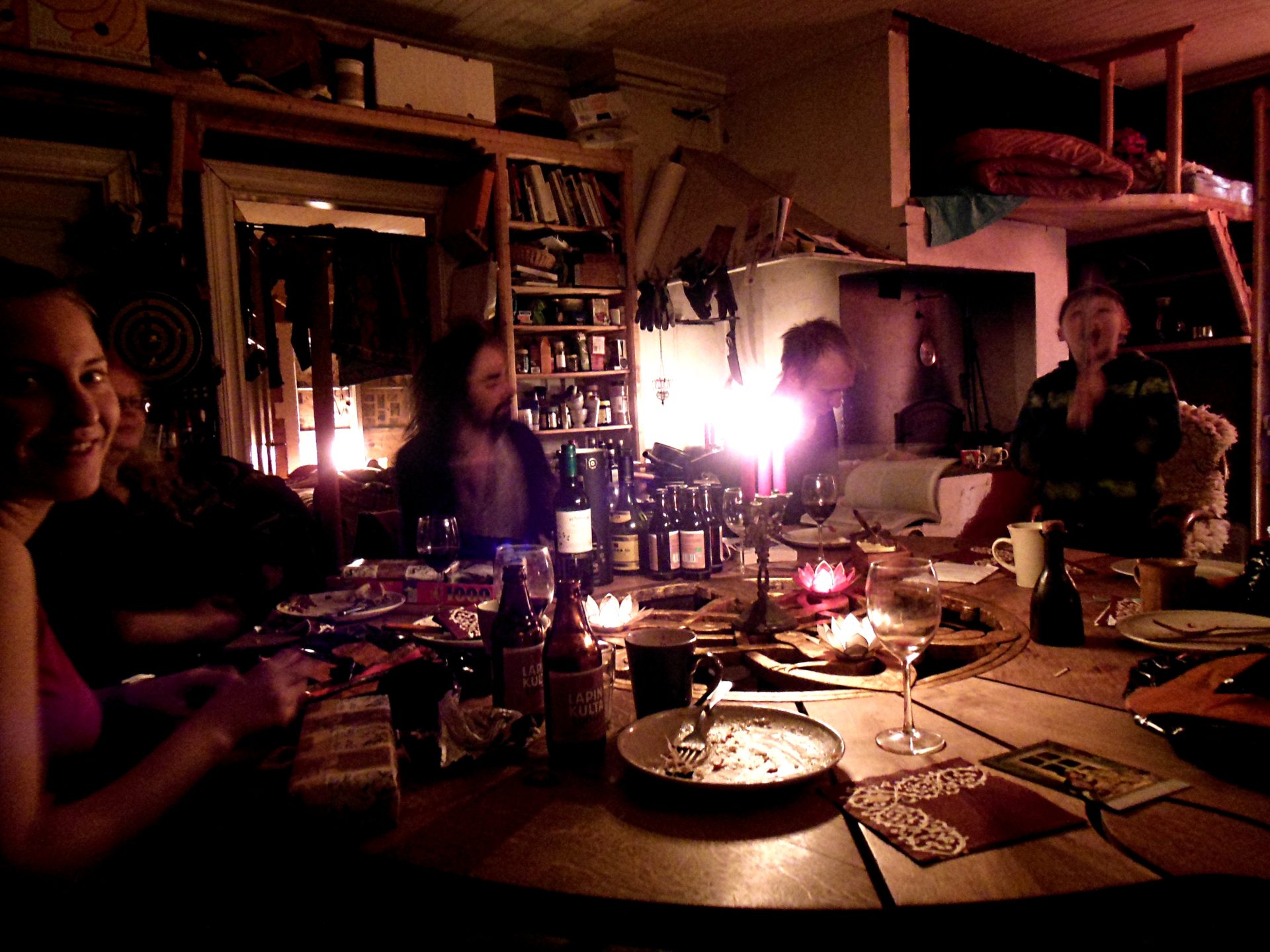Deep within the Finnish wilderness, there is a secret valley. The valley is surrounded by a thriving, untouched wilderness and a magnificent forest of tall, dark trees. There is something special about this forest, something ancient that lives, and breathes, and watches. The people of the small, nearby village of Fagervik do not know about this secret valley nor do they dare go into the woods, for it is said that only those of pure heart are allowed entry.
It was many years ago a group of people discovered the secret valley, as was their destiny. The sun soaked plains instantly felt like home, and these people decided together to one day build a village and settle there. They named their new home “Solbacka”.
It was to our joy that Ashleigh and I found this community on our visit to Finland. We were having trouble finding a place to work and stay in the past during our Europe trip, but Solbacka was one of the first volunteer positions for Finland we contacted through HelpX and we were answered almost immediately. There were many house building projects on the go as the community of Solbacka was beginning to make the valley their permanent residence, and so it seemed there would be a lot of work for us HelpXers.
It was with Pia Lindman that we found our place. She welcomed us into her house, just a few minutes drive from Solbacka, with open arms. Ashleigh and I were instantly made happy and comfortable within our temporary home. Our host, Pia, spoiled us with traditional Finnish foods and treats that we otherwise would not know about (see Ashleigh’s article, Scandinavian Food, a Smörgåsbord!). She had a lot of knowledge about homeopathic medicine, which she happily shared; her cupboard shelves were stacked with all kinds of natural herbs she had collected over the spring/summer along with other herbal remedies, including some home-made St. John’s Wort Vodka (my favourite medicine!).
During our stay Pia also gave us an example of an ancient Finnish massage technique called “Kalevala”. Kalevala is a Finnish epic story; a well of knowledge in the form of songs. The songs talk about the entire human anatomy, medicines, herbs, farming techniques, and other practical knowledge. It is from this epic that the physio-therapy of “Finnish traditional limb correction according to Kalevala” stems. I was getting some major pain in my back and neck for several months before our arrival, but to my luck Pia had studied under this Kalevala and offered to give me a treatment. By preforming this rigorous therapy on my back, Pia was able to correct and help heal whatever misalignments I had, and she also gave me a few good tips on how to keep from injuring myself again.
But we didn’t just eat amazing food and get wonderful massages during our stay, we also managed to get some work done. Pia was in the process of building her new home, a straw bale house in Solbacka valley, using environmentally friendly and traditional construction techniques. She needed volunteers and I was quite excited to be a part of this project and to learn as much as I could about “green building”.

A straw bale house has its benefits as the material is plentiful, renewable, and provides an excellent insulation value. The bales are fire resistant, being packed extremely tight, and can be used structurally as load-bearing walls, taking the weight of the roof. Another huge plus, of course, is that you won’t be contributing materials to the ever growing landfills of the world.
With Pia’s house the straw bales were stacked upon a raised foundation with a moisture barrier between the bales and their supporting platform, as the straw is susceptible to rot if exposed to water. The bales were compressed tight and tied together with timber to make a structurally sound wall. Proper compression is a must to ensure the bales will not settle under the weight of the roof assembly. The interior and exterior walls are later covered with wire or reeds and then several layers of clay, though we hadn’t reached that stage during our time in Finland.
An interesting way to heat one’s home, something I have seen a few times during our travels through Scandinavia, is the rocket mass heater. It’s an extremely efficient wood burning stove that uses very little wood to get going and once it’s closed up it can keep the heat for many hours. The way the rocket stove works is fairly simple: the first J-shaped chamber, where you light the fire, leads vertically into a second larger metal or fire brick chamber. From there, the heat moves along a horizontal chamber before exiting out the chimney. The horizontal chamber is often used as a warm sitting area where you can curl up in toasty comfort and read a book with some hot cocoa or whatever.

Pia’s house was complete with one of these rocket ovens as well as a larger wood-burning oven for cooking. A bathtub was built into the rocket oven to help keep the water warm whilst one joyfully cleans themselves. The ovens, at the time we were working there, weren’t fully complete and still required several layers of clay on top of the red brick. Another example of this rocket stove was at Makvarket, the cultural and environmental centre we stayed at in Denmark. In Makvarket’s main living space there was a great dragon stove; one would light a fire in its mouth, the heat would move up into a large metal barrel on its back, and then move along the horizontal chamber that was the dragon’s scaly body.
We stayed in Solbacka throughout December and January during one of Finland’s mildest winters. It didn’t drop below -6°C or even snow until mid January. Those hardy Finns were complaining about not being able to ski, but I certainly didn’t mind a break from the cold, considering back home at the time it was -40°C with wind chill warnings all across the province. The days in Finland were too short and too dark for me, being much farther north than back home. We celebrated the winter solstice with the people of Solbacka, the shortest day of the year but the beginning of the days getting longer again. We fought the darkness back together by having regular trips to the 400 year old sauna left over from an old farmstead, and by lighting many, many candles. We had a wonderful Christmas celebration at Solbacka with several different kinds of fish and traditional Finnish foods that were so very tasty, and we even got a few Christmas presents to our surprise and delight.
Both Ashleigh and I had a wonderful time staying and working in this secret valley and felt so welcome by the people living there. I couldn’t think of a better place to spend the darkest time of the year than with the people of Solbacka, and we both left feeling just a little bit lighter.











Good morning Nat just read your story on Solbacka. A very good read. Sounds like it was a lot of fun and a great learning experience. It would be interesting to see their community when it is established and running as envisioned. I hope the weather in the UK is amenable to travel as it is -42C with the chill here this morning. Oh well the days are getting longer and spring is less than 2 months away. Have fun.
Hello, thanks! Yes, I had a lot of fun working on the house and learning about a more traditional building technique. There are a few different houses started on the property and they were all looking great so far. The weather here in the UK is little misty and rainy, but quite warm… I’m hoping to have skipped over winter this year!